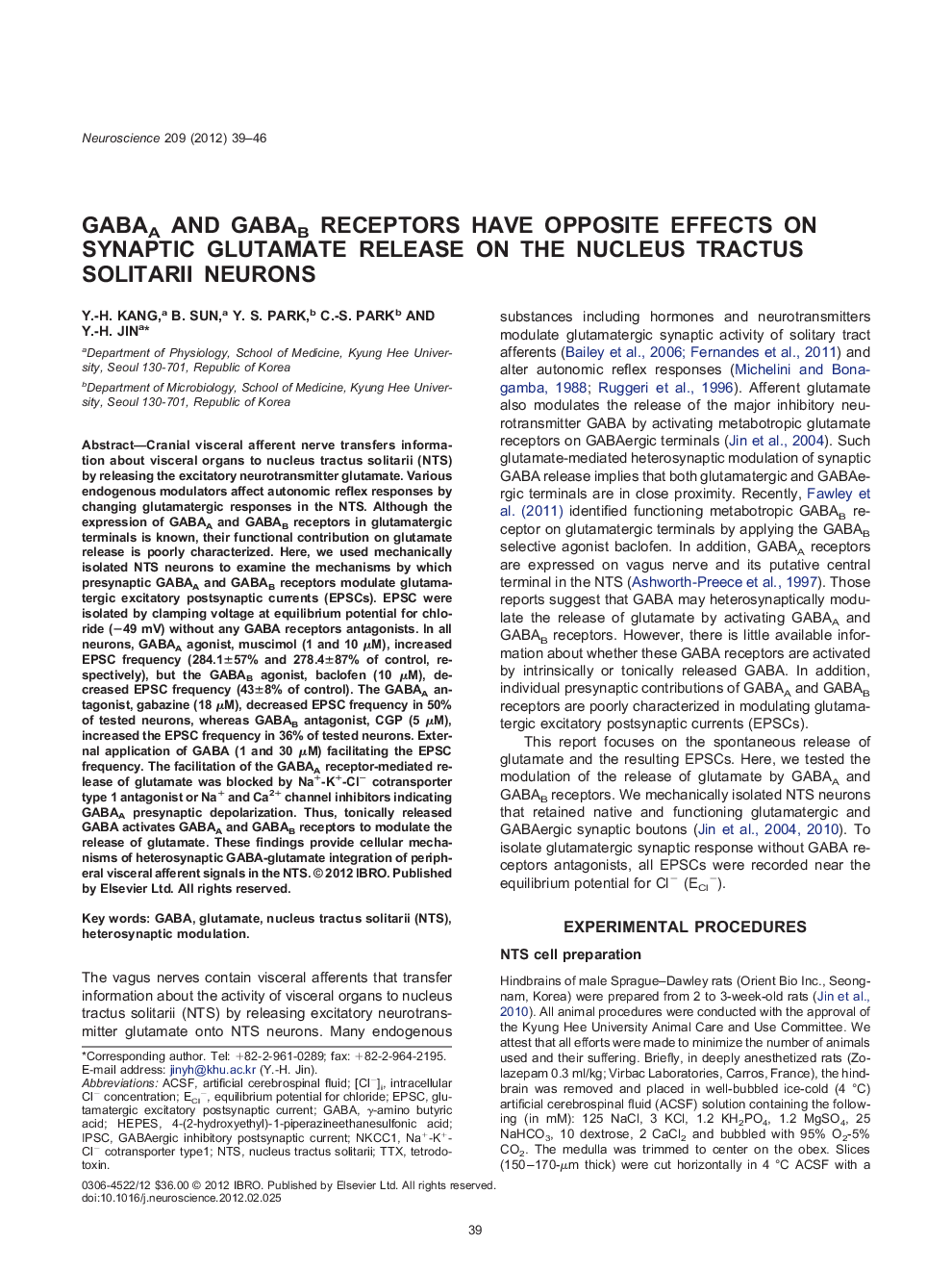| کد مقاله | کد نشریه | سال انتشار | مقاله انگلیسی | نسخه تمام متن |
|---|---|---|---|---|
| 4338517 | 1614867 | 2012 | 8 صفحه PDF | دانلود رایگان |

Cranial visceral afferent nerve transfers information about visceral organs to nucleus tractus solitarii (NTS) by releasing the excitatory neurotransmitter glutamate. Various endogenous modulators affect autonomic reflex responses by changing glutamatergic responses in the NTS. Although the expression of GABAA and GABAB receptors in glutamatergic terminals is known, their functional contribution on glutamate release is poorly characterized. Here, we used mechanically isolated NTS neurons to examine the mechanisms by which presynaptic GABAA and GABAB receptors modulate glutamatergic excitatory postsynaptic currents (EPSCs). EPSC were isolated by clamping voltage at equilibrium potential for chloride (−49 mV) without any GABA receptors antagonists. In all neurons, GABAA agonist, muscimol (1 and 10 μM), increased EPSC frequency (284.1±57% and 278.4±87% of control, respectively), but the GABAB agonist, baclofen (10 μM), decreased EPSC frequency (43±8% of control). The GABAA antagonist, gabazine (18 μM), decreased EPSC frequency in 50% of tested neurons, whereas GABAB antagonist, CGP (5 μM), increased the EPSC frequency in 36% of tested neurons. External application of GABA (1 and 30 μM) facilitating the EPSC frequency. The facilitation of the GABAA receptor-mediated release of glutamate was blocked by Na+-K+-Cl− cotransporter type 1 antagonist or Na+ and Ca2+ channel inhibitors indicating GABAA presynaptic depolarization. Thus, tonically released GABA activates GABAA and GABAB receptors to modulate the release of glutamate. These findings provide cellular mechanisms of heterosynaptic GABA-glutamate integration of peripheral visceral afferent signals in the NTS.
▶GABAA and GABAB receptor-mediated modulation of glutamatergic EPSC was tested. ▶In all tested neurons, GABAA agonist, muscimol (1 μM), increased EPSC frequency. ▶In all tested neurons, GABAB agonist, baclofen (10 μM), decreased EPSC frequency. ▶GABAA antagonist, gabazine, decreased EPSC frequency in 50% of tested neurons. ▶GABAB antagonist CGP increased EPSC frequency in 36% of tested neurons. ▶Muscimol-induced EPSC frequency increase was blocked by NKCC1 antagonist bumetanide.
Journal: Neuroscience - Volume 209, 3 May 2012, Pages 39–46